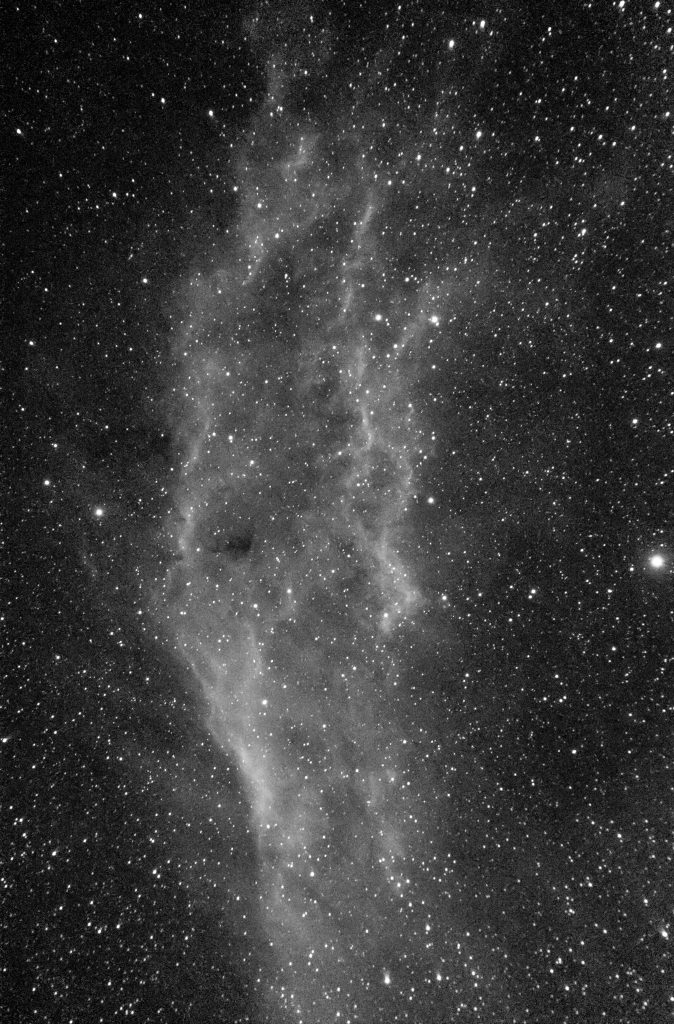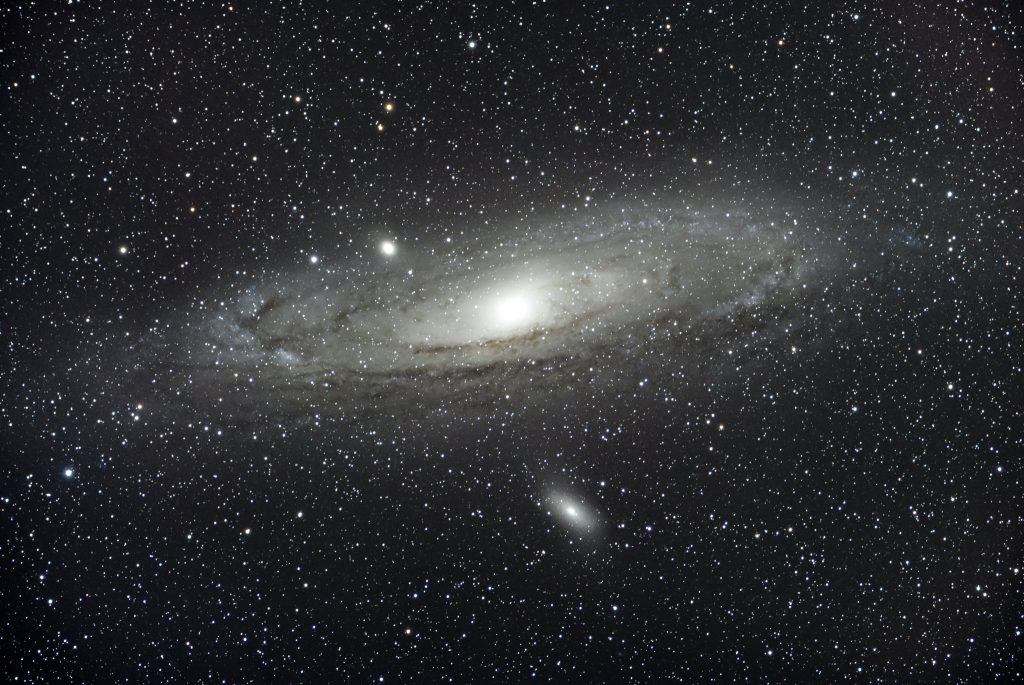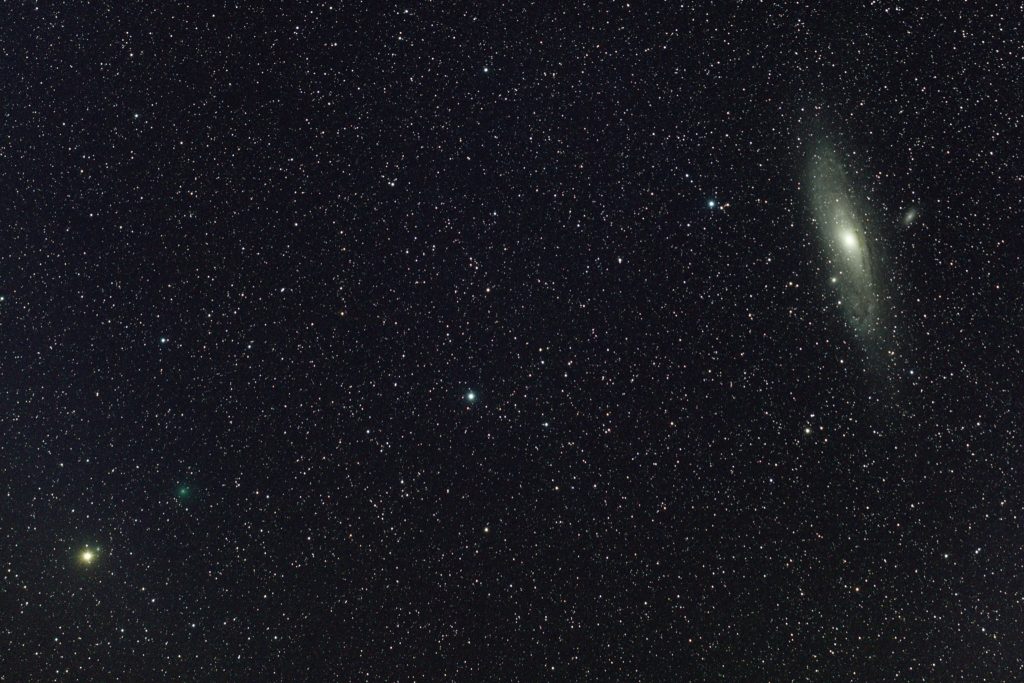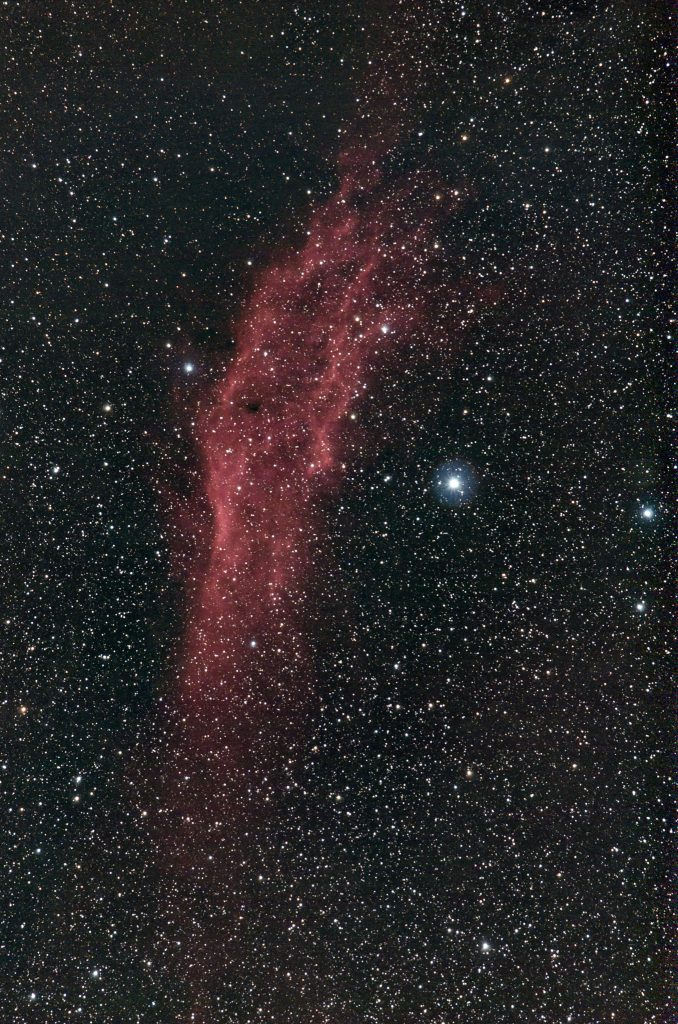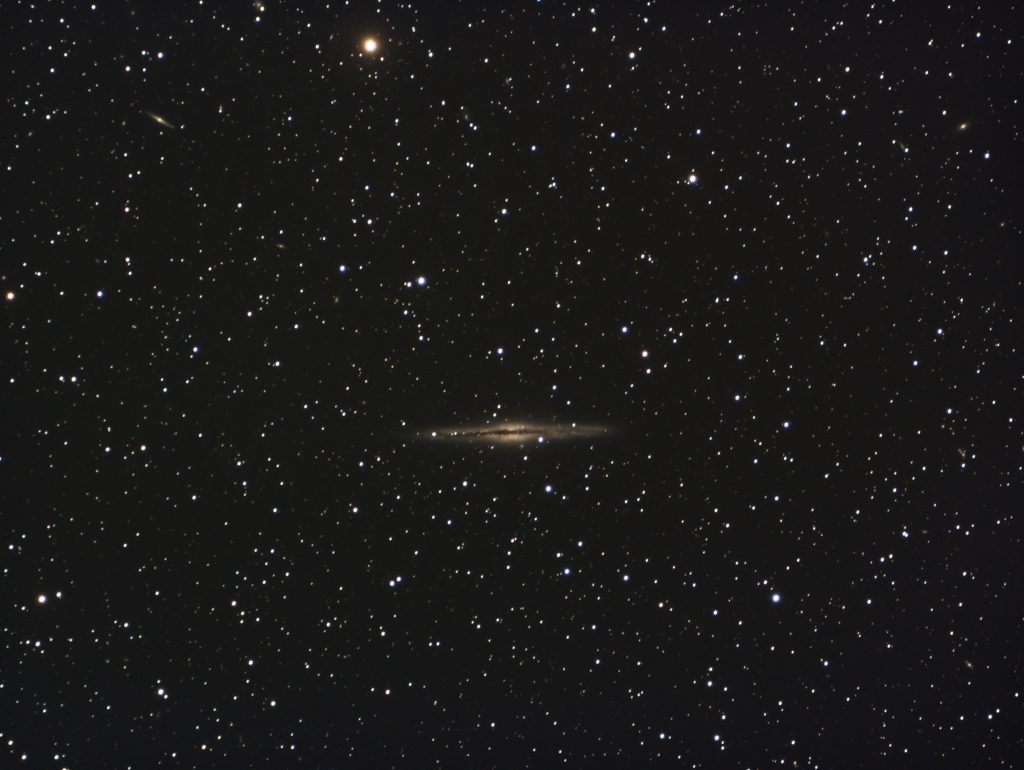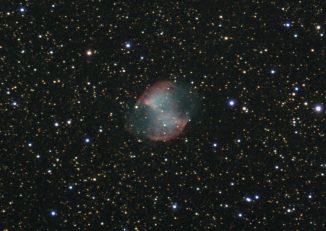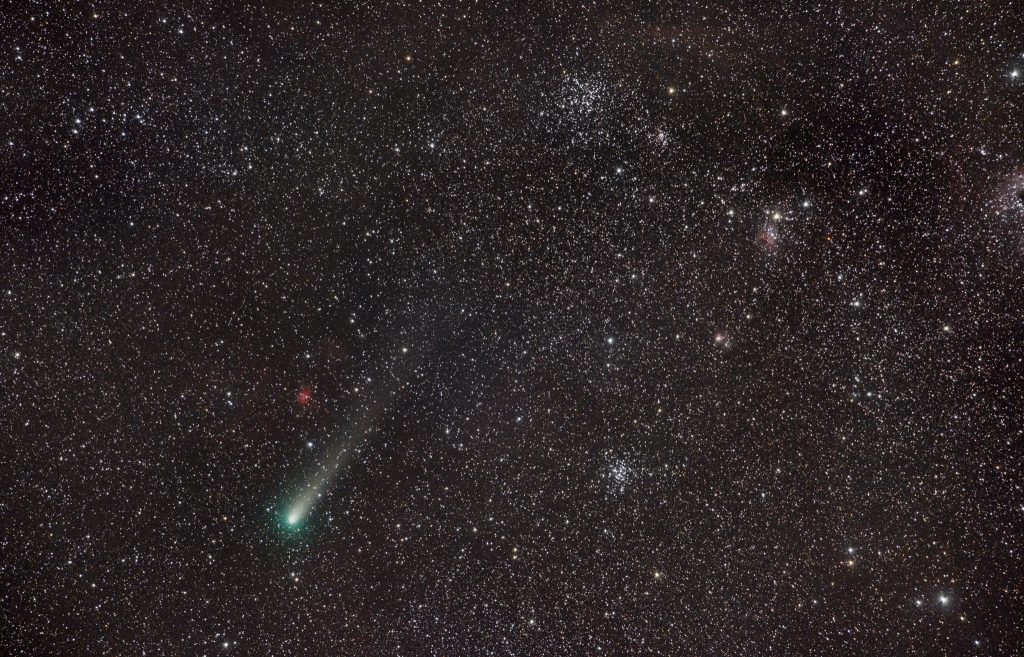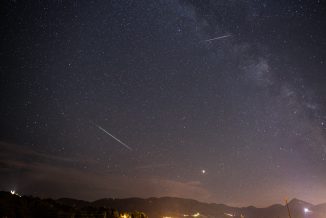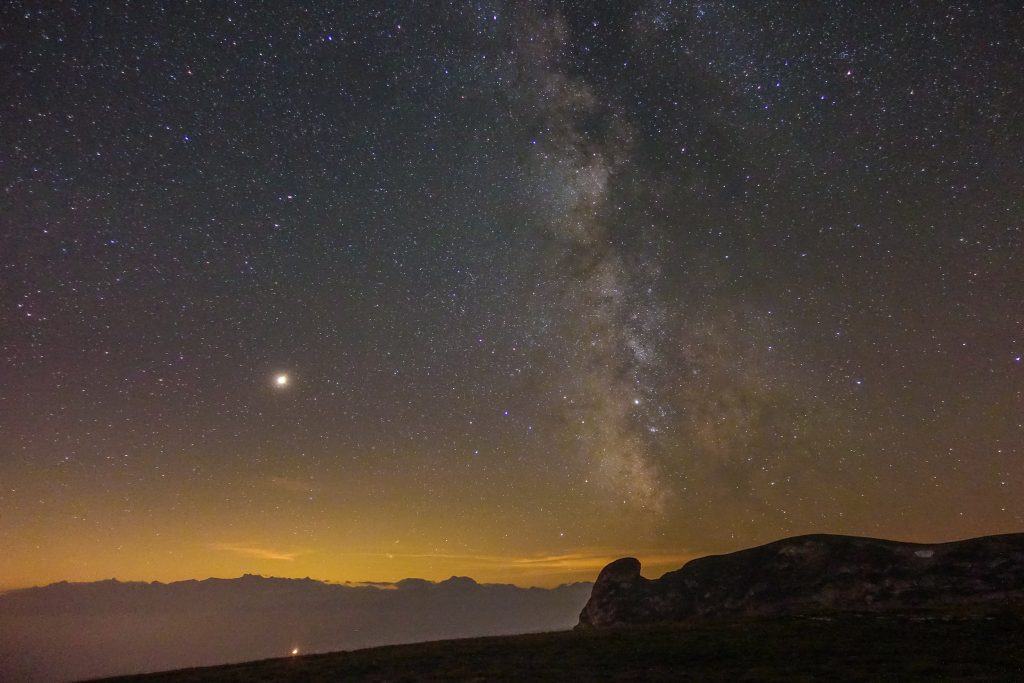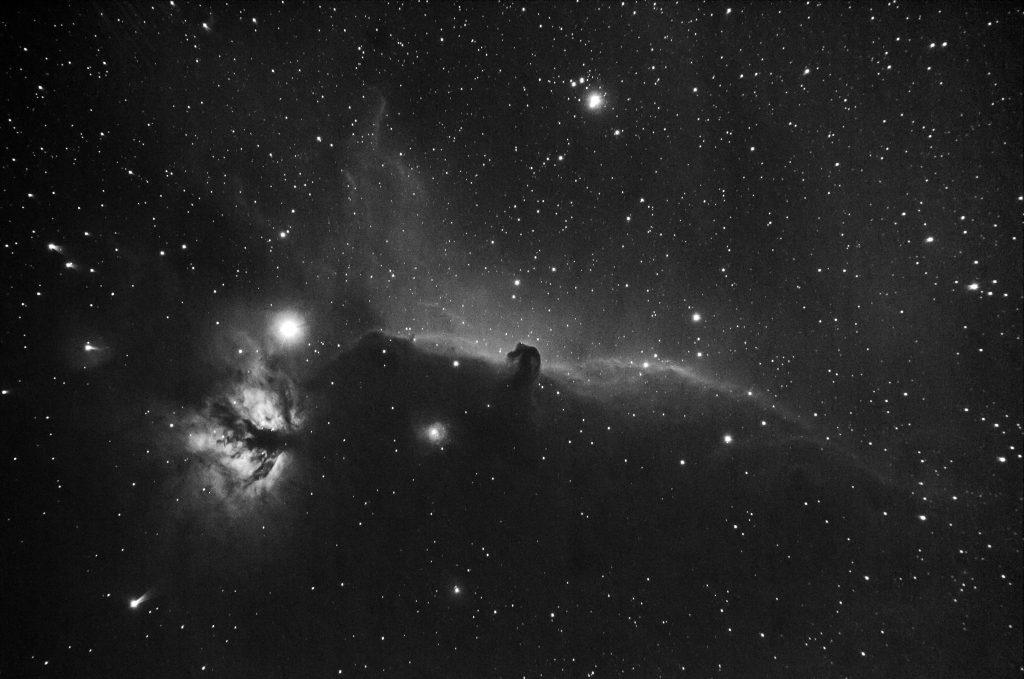
Barnard 33 is the horse-head shaped dark cloud silhouetted agains the glow of excited hydrogen which goes by the name of IC434. To the left is the Flame Nebula NGC2024, which is an odd nebula, because it is orange, and apparently a mixture between reflection and emission nebula.
Read More